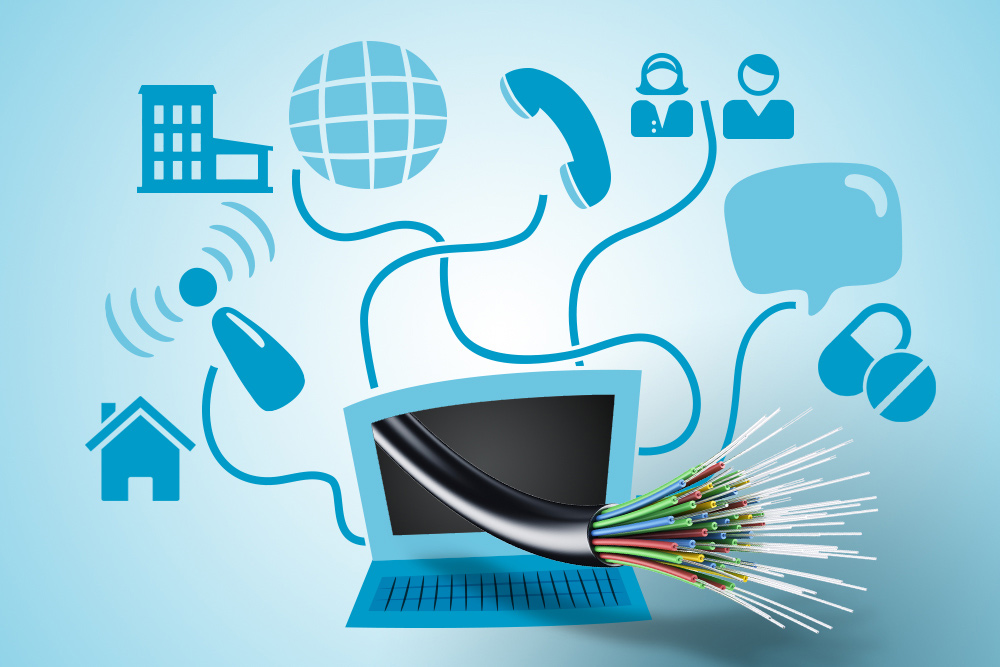For many years, copper wires were the most used material for network communication all over the world. Well, that was before fiber optics came. The game changed, and everybody hopped on the bandwagon. Soon after, almost every household or business establishment switched to a fiber optic network connection. Now, some individuals want to undergo fiber optic technician training as the effect of the trend that is fiber optics. IT professionals also prefer fiber optics more than the traditional copper cables, that is because fiber optics transmits information more effectively, and uses energy more efficiently. Fiber optics is also already being used by many large companies as DSL and cable providers have already adopted fiber optics, and we can expect more to sign up soon. As a result, various fields of work opted for fiber optics mainly because of its effectivity and speed.
Computer Networks
As of today, the fastest and main way of carrying information over long distances is through fiber optics. It is all because of its three very big advantages over our old friend, copper cables. It’s less attenuation, no interference and higher bandwidth. These very big advantages are used in computer networking. Computers were once connected over long or short distances by telephone lines composed of copper cables, but as years went by, more and more switched to fiber optics when problems in copper cables begin to surface. Fiber optics doesn’t lose signal strength as quickly as copper cables when carrying data over long distances because data don’t break in fiber optic cables. This leads to a more effective information transmission. Another thing in the field of computer networks that takes advantage of fiber optics is (yes, you guessed it) INTERNET. Internet service providers are now shifting to fiber optics for data is moved around quickly with fiber optic cables than the traditional copper ethernet cables. The faster the internet, the more we can do online, or the more we can maximize our work time.
Broadcasting
When broadcasting first started, shooting electromagnetic waves through the air from a single transmitter to thousands of antennae was technically easy. Now, it’s just a relatively simple idea to some because these days, watching shows on television is done with fiber optic cables. Originally used coaxial cables, Cable TV companies found the need to use fiber optic cables because more people wanted greater choice of channels and programs offered by TV networks. Aside from offering a much higher capacity of carrying data, fiber optic cables suffer less from interference which means better picture and sound quality for TV viewing. In addition, the trend now is watching TV through the internet like Netflix which offers movies on demand.
Medicine
Endoscopy is just a primary example of fiber optics applied in the field of medicine, but new forms are spawning today, and they are just as important as ever. Inserting hair-thin fiber optic cables into a patient’s body, doctors can peer inside easily without cutting them open. This latest development is called lab-on-a-fiber. The fibers used are similar to the ones used in communication cables. A lamp or laser is attached to one end of the fiber cable that has built-in sensors, that zaps light through the cable that is inserted in a particular part of the body that the doctor wants to examine or study. The patient’s body reacts to the light that is going through the cable that changes its properties in a way that can be measured by an instrument at the other end of the fiber cable. It is measured by temperature, blood pressure, cell PH or even the presence of medicines in the bloodstream. It is not exactly “seeing” through the patient’s body, but more like sensing and measuring it instead.
Military
Military forces nowadays are connected the same way internet users are—through fiber optics. With the high-tech equipment in the world of military defense evolving, cutting on cost and the weight of the equipment is a must. Fiber optic cables are inexpensive because they do not break easily unlike copper cables, robust against attack and immune against lightning strikes when installed in a military airplane. It is also lightweight, making it the main reason military airplanes, tanks and helicopters switched from copper cables to fiber optic cables. They weigh 90 percent less than copper cables. But the most important thing the military considers is the fact that fiber optic cables experience no interference. Enemies can’t detect or jam them because fiber optic cables do not carry electric signals.
These are just four fields to name a few, but one thing is for sure: fiber optics is the most reliable innovation you can get today, or for now. After all, technology is fast evolving.



